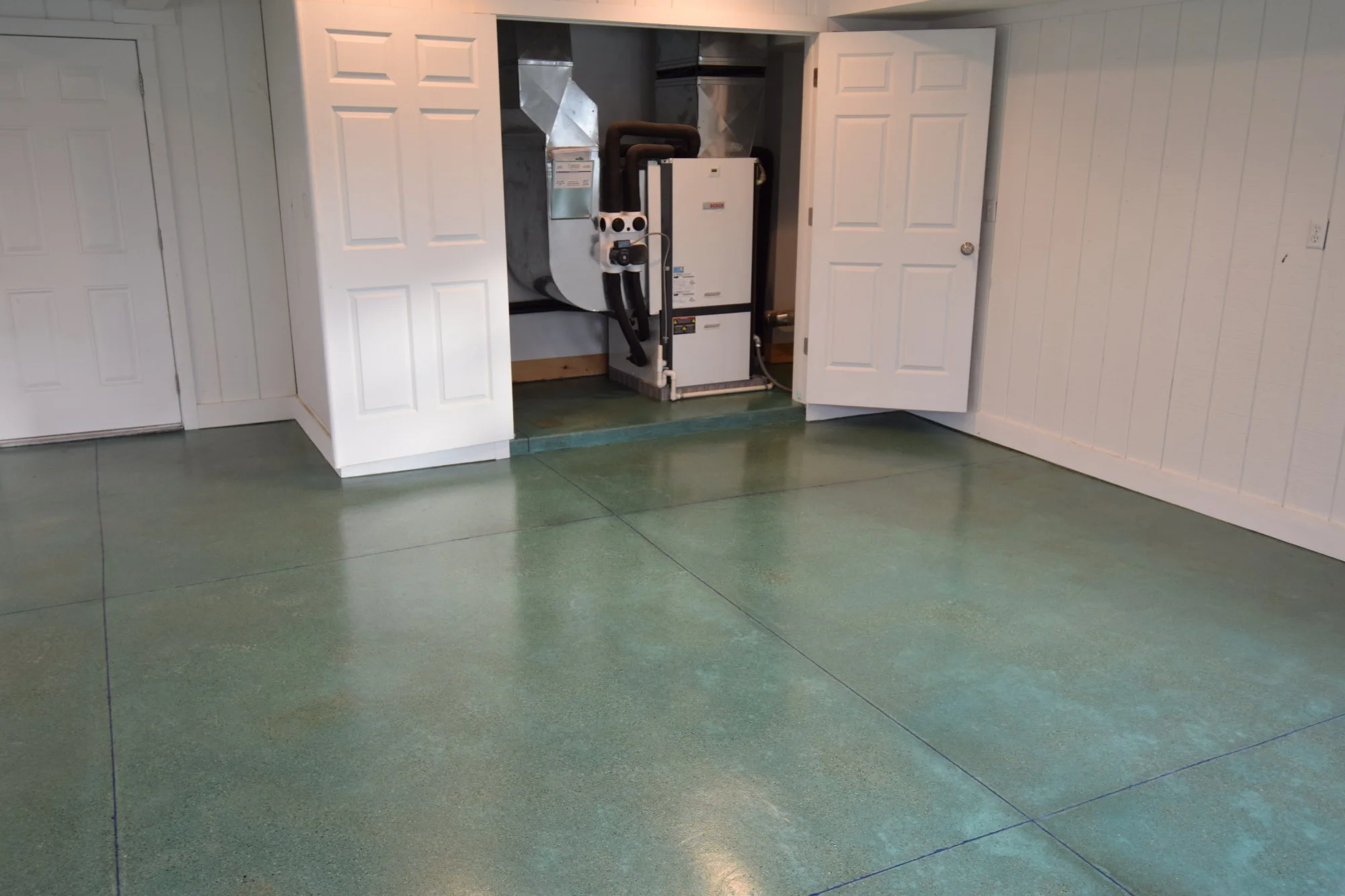Concrete saw-cutting
Well placed and properly installed concrete has linear joints positioned throughout the surface of the slab to allow different sections of concrete to move freely under stress from temperature swings, drying shrinkage, and subgrade settlement so that cracks don’t form. The two most common types of joints in decorative concrete are contraction, or “control”, joints, and isolation, or “expansion”, joints. Contraction joints are found within the main, interior body of the concrete and are usually ⅛” or 3/16” wide, and 1” to 1.5” deep. Isolation joints are located around the perimeter of the concrete, and near posts or columns, and are usually about ¾” wide and extend all the way through to the sub-grade.
The saw-cut control joints in this two-car garage were filled with dark blue polyurea joint filler to accent the blue-green acid stain and keep the joints from filling with salt and snow in the winter, and joint edges from spalling due to tire pressure.
Contraction joints are saw-cut or formed by the concrete contractor just hours after the concrete is poured, and they are left empty, while isolation joints are formed before the pour and filled with a temporary or inexpensive material, like foam or plastic. Both joints present potential problems for a stained or decorative concrete floor in terms of maintenance, moisture intrusion, chipping and spalling, durability, longevity and overall appearance, if they are not filled with a quality, lasting material. Contraction and isolation joints can also present problems, and make matters even worse, especially with appearance, if they are filled with the wrong material or not properly cleaned and prepped beforehand.

